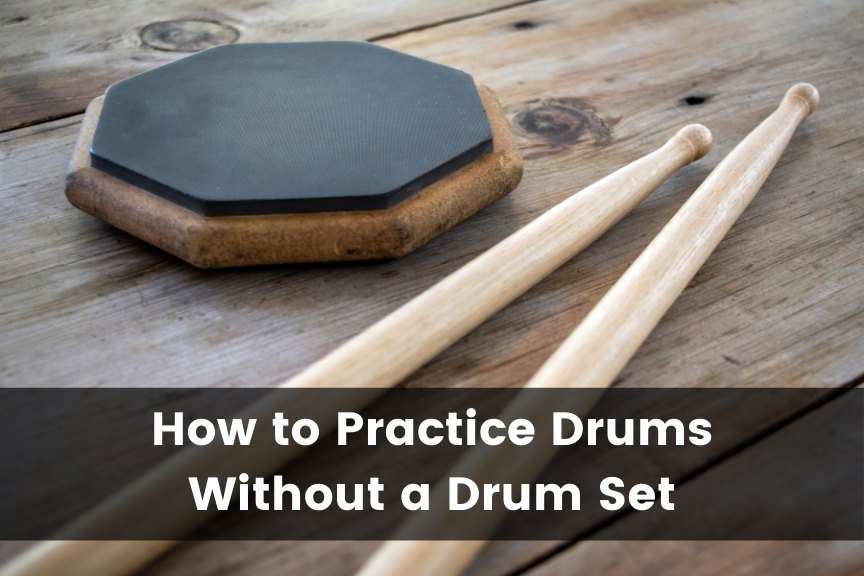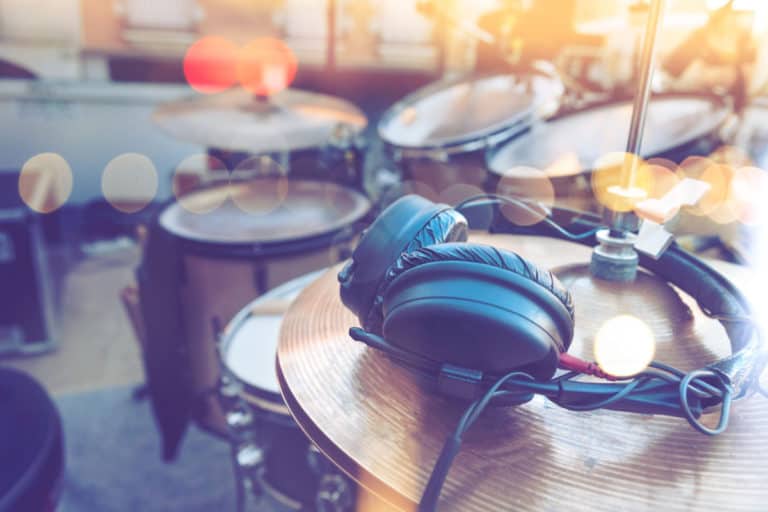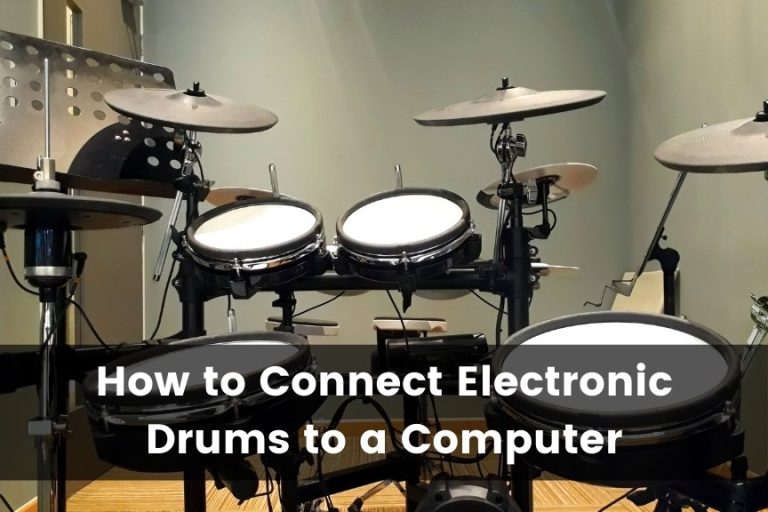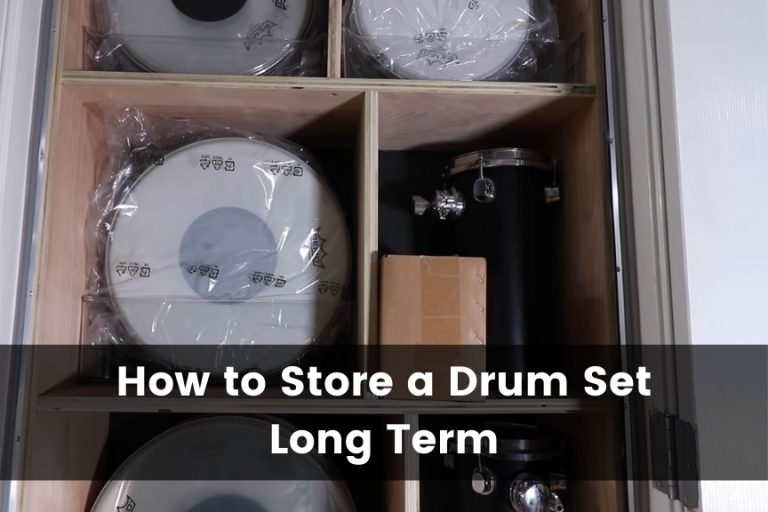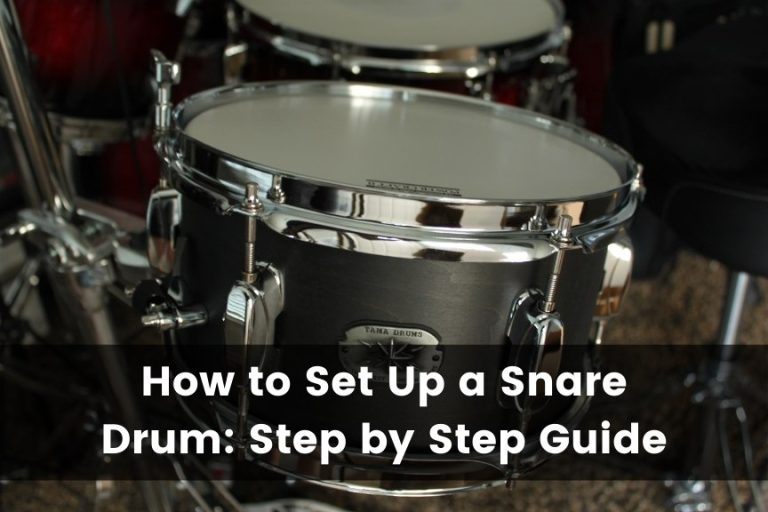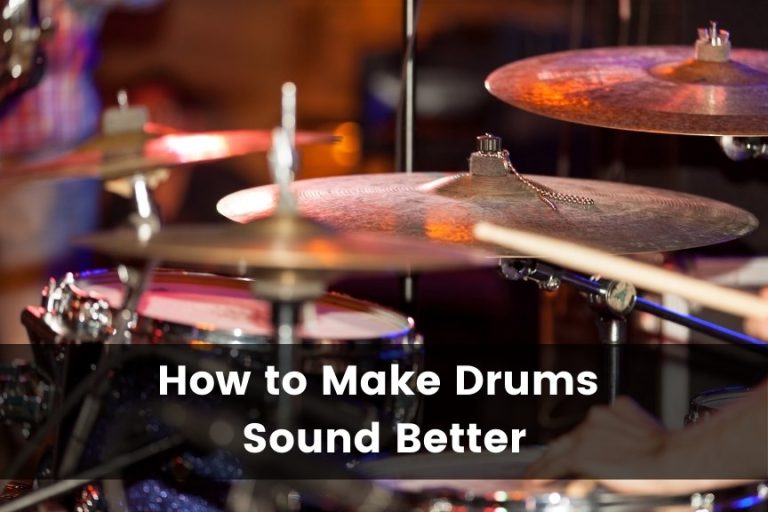How To Practice Drums Without a Drum Set (10 Simple Ways)
Learning to play the drums, like any other instrument, takes a lot of practice. Among the most common problems beginner drummers face are not having the space for a full drum set and not being able to practice at home due to sound limitations. You shouldn’t let that hinder your drumming progress, though.
Here’s how you can practice drums without a drum set in 10 simple ways:
- Get a practice pad.
- Use pillows and practice with your hands.
- Air drum to practice movements.
- Use your feet to drum on the floor.
- Practice timing with beatboxing or clapping.
- Use pots, pans, buckets, and even cardboard boxes.
- Use your own body to practice.
- Go virtual with a drumming app.
- Get an electric drum set.
- Metronome practice.
With a little bit of creativity, you can practice your drumming skills even if you don’t have a drum set or can’t make loud noises. Keep reading to learn about fun and simple ways to practice drums without a drum set!
1. Get a Practice Pad
One of the easiest and most effective ways to practice your drums without a drum set is using a practice drum pad. These pads were designed specifically for people who don’t have a drum set or cannot practice on a regular drum set because of the noise.
Practice pads are affordable, compact, and, most importantly, silent. Whatever keeps you from practicing on a real drum set—be it price, space, or noise—won’t be a problem with a good set of practice pads.
The best part about using practice pads for your drumming is that you’ll get many of the same benefits from practicing on an actual drum set. Practice pads are excellent at developing sticking, rudiments, and technique. It won’t be exactly like playing on a real drum set, but it’s probably as close as you can get!
This LOLUNUT 12 Inch Silent Drum Pad (available on Amazon.com) is an affordable way for beginners to get started. It comes with two sticks and even a travel bag so you can practice on the go. If you’re looking for a sturdier setup, the SLINT Drum Pad Stand Kit (available on Amazon.com) comes with a pad stand, three pairs of drum sticks, and even a beginner’s ebook.
2. Use Pillows and Practice With Your Hands
Believe it or not, another great way to practice your drums without a drum set is with a pillow. Many professional and advanced drummers recommend pillow drumming to beginners to practice their rudiments.
Drum rudiments are 26 sets of short drumming patterns that serve as a base for more extensive or complex patterns. Mastering the rudiments is one of every amateur drummer’s first tasks before moving on to more advanced pieces.
Using one or two pillows and your hands can be a great way to practice memorizing the rudiments and getting the timing right. Sure, you won’t make any awesome sounds from slapping your pillows with your hands. Still, the main point of this exercise is to memorize the rudiments to the point where they become second nature to you.
If you already have a pair of drumsticks, you can also use them on your pillows. If you’re using drumsticks, note that the sturdier the pillow, the better. A hard pillow will allow you to get a stronger bounce that closely resembles a real drum.
If you’re still unsure how you could possibly use a pillow to practice your drums, check out this YouTube video from Drumeo for a quick demonstration:
3. Air Drum to Practice Movements
Air drumming is by far the simplest way to practice your drums. You don’t need anything at all! Just by using your hands, you can practice your rudiments or pretend to jam to your favorite songs.
Air drumming helps improve rhythm, muscle memory, and multi-limb coordination. Although practicing on hard surfaces that make strong sounds does work better than air drumming, this can still be a good exercise you can do if you’re short on time or don’t have any equipment on hand.
The best part is, you can practice air drumming virtually anywhere. If you’re discrete enough, you can practice air drumming on public transit, while waiting for an appointment, and even during downtime at work! Just make sure to avoid disturbing the people around you.
Now that you know that you don’t need anything at all to master drumming, you have no excuse to miss out on your daily practice!
4. Use Your Feet To Drum on the Floor
Feet—or ground—drumming can be a great way to work on your rhythm and practice the bass drum pedals. While drumming with your feet won’t get you much muscle memory in using drumsticks, it can help you hone in on your rhythm and timing.
This technique can be particularly helpful if you’re trying to work on the drum pedal. Practicing your drum pedal with just your feet on the ground can be beneficial for several reasons:
- It can help you fine-tune your rhythm and coordination to play double bass.
- It’ll help you work out your shins and increase muscle strength as you hit the ground, which is useful when drumming with a real drum pedal.
- You’ll work out your stamina as the drum pedal springs won’t be there to make your feet bounce back.
In addition to helping you with your drum pedal skills, drumming with your feet can be helpful to develop multi-limb coordination, which is an essential drum skill.
Since drumming requires you to use your arms independently from your legs, practicing feet drumming while doing something else with your arms can help develop multi-limb coordination.
Air drumming can help you if you struggle with the hand-eye coordination aspect of drumming. It’ll allow you to develop the motor skills necessary to become an expert drummer if you’re generally a clumsy person.
A bonus benefit of air drumming is that you can actually burn more than 900 calories per hour (or more than 3770 kJ). That’s equivalent to an intense 45-minute gym workout!
Watch the following YouTube video for concrete feet drumming strategies you can follow to practice your drumming without a drum set:
5. Practice Timing With Beatboxing or Clapping
Unlike the other techniques mentioned in this article, beatboxing and clapping won’t help you with muscle memory. These movements won’t be terribly helpful when developing your drumming technique. Still, they can help you in one key area: rhythm and timing.
If you’re an advanced musician, dancer, singer, or otherwise have excellent rhythm and timing skills, then this won’t be very helpful for you. However, if you’re a beginner and need to fine-tune your timing, you should take advantage of this simple tip that’ll help you nail your next jamming session with a real drum set.
The best part about clapping or beatboxing for timing is that you’ll improve your rhythm in general. A more accurate sense of rhythm will be very helpful for playing the drums and playing any other instrument.
Here’s a very helpful YouTube video on clapping for rhythm:
On the other hand, beatboxing can also be very helpful for developing a good sense of rhythm. Improving timing, rhythm, and coordination are only some of the benefits of beatboxing that have turned many into fanatics. In fact, beatboxing is even used to treat people who go through laryngectomy due to throat cancer.
So, don’t think of beatboxing as a silly pastime for kids. Learning to beatbox can be an extremely fruitful hobby that can help you perfect your musical timing. If you’re unsure where to start, check out this helpful blog post on how to beatbox.
6. Use Pots, Pans, Buckets, and Even Cardboard Boxes
If you’re truly passionate about something, then nothing will be able to stop you. This is especially true for picking up new skills like drumming. So, if you don’t have a real drum set that you can practice on, then you’re going to have to get creative.
Pretty much any hollow and sturdy object will be a good pretend drum. Pots and pans can be handy and make a decent noise that can help you mimic the noise of a real drum set (albeit less harmoniously). Just be careful not to use something too sturdy to hit them with, as they might get dented.
Empty plastic buckets are another great choice for a makeshift drum set. They’re cheap, sturdy, hard to damage, and you probably already have one in your home. Aluminum buckets can work, too; just be aware that you might dent them if you bang on them too hard.
Lastly, if you don’t have any of these objects on hand, you can just use cardboard boxes. Although they won’t be as sturdy as pots, pans, or buckets, they’ll surely get the job done.
A cardboard box from a delivery package would be ideal, but you could even use an empty food box. If none are available, you could even get free boxes from Costco or one of the many places that give out unused cardboard boxes for free.
7. Use Your Own Body To Practice
Using your own body to practice drums is without a doubt one of the easiest ways to get some easy practice in. Before you dismiss this technique as too obvious, you should know that body percussion is a traditional African and Southeast Asian performance with a rich history. Body percussion is essentially the art of making music with your own body, which can help you with drumming.
Indeed, making music with your own body has long been a tradition in many cultures. This means of making music is widely appreciated for its beauty and many health benefits. Practicing body percussion is not only fun but can also help reduce stress, stay healthy, and boost the immune system.
As for drumming, body percussion can help you nail key elements like rhythm, beat, and tempo. By engaging with your body in rhythmical ways that may be out of the ordinary for you, you can actually increase your cognitive function and ultimately improve your drumming skills.
Once you learn how to practice body percussion, you’ll be able to do it anywhere. You can transform any empty room or any outdoor space into a great place to practice body percussion. You’ll improve your drumming skills while developing a unique and exciting talent!
If you’re unsure as to how to get started with body percussion, we recommend the following YouTube video:
8. Go Virtual With a Drumming App
Whether on your phone or tablet, you can now find plenty of drumming apps that’ll let you practice drums without a drum set. Here are some of our favorites:
Drumeo (iOS and Android)
Drumeo is by far the most popular online drumming platform out there. It has thousands of songs and step-by-step video lessons available for beginners to advanced drummers. With the iOS and Android app, you can carry a wealth of lessons with you wherever you go.
Unfortunately, you cannot use the app to practice your drumming directly on it. Instead, you can watch video lessons and practice your drumming by using one of the other techniques mentioned in this article, like air drumming, feet drumming, or even body percussion.
DrumKnee 3D Drums (iOS)
DrumKnee 3D Drums is—as the name suggests—a 3D drumming app. You use your fingers to tap on the different drums, cymbals, and even tiny tambourines. While this is a relatively simple app, it can allow you to create your own concerts once you get enough practice.
Of course, tapping your phone is nothing like playing a real-life drum set, but using this app can help develop rhythm and tempo. It can also keep you entertained during long flights, at the DMV, or while you wait for your food to cook.
Drum School (iOS and Android)
Drum School is an interactive drumming app that’s perfect for beginners. If you’re still trying to learn how to read music notation, this app comes with over 400 exercises that’ll help you get the hang of music sheets in no time.
The app also comes with video demonstrations on dozens of different drum techniques for both your hands and feet, making it perfect for when you don’t have a full drum set on hand.
9. Get an Electronic Drum Set
Electronic drum sets can be great choices for those who can’t use a regular drum set due to noise constraints. Newer electric drum sets are practical options for those who live in apartment buildings, have a small baby at home, or live with someone who doesn’t appreciate loud noise.
Electric drum sets are a perfect compromise between accuracy and practicality. With a high-quality electric drum set, you can continue practicing your drums just as if you were using a traditional drum set—all without the loud noises.
If you’re looking for a fantastic electric drum set to take your drum practice to the next level, we recommend the Alesis Drums Nitro Mesh Kit (available on Amazon.com). This kit comes with eight next-generation mesh modules designed to simulate real drums. You won’t feel like you are missing out on anything when you use this electric drum set to practice!
10. Use a Metronome To Practice
If you’re not using a metronome to practice your drumming, you need to start immediately. A metronome will help you learn to drum at a consistent speed by standardizing your beats per minute (BPM).
Doing metronome drills will do absolute wonders for your drumming practice. Training your brain to understand and flawlessly replicate different BPMs can take your drumming skills to the next level. Metronome drills are also extremely convenient since you don’t need any instruments to practice!
If you don’t have a metronome, you can get a high-quality one from Amazon at an affordable price. The Ueteto Mechanical Metronome (available on Amazon.com) is perfect for getting your BPMs just right without breaking the bank.
If you’d rather not carry a physical metronome with you, you can also download a metronome app on your phone or tablet. The Metronome by Soundbrenner is the world’s most popular metronome app and is available for iOS and Android devices.
Once you get your hands on a mechanical or digital metronome, check out the following video for some helpful exercises to tune up your rhythm:
Final Thoughts
Physical drum sets can be large, loud, and heavy, making them impractical for many situations. However, there are many ways to practice drums without a drum set.
Some of the best ways are:
- Using a drumming practice pad.
- Using sturdy pillows as drums.
- Air drumming.
- Feet drumming.
- Beatboxing and clapping.
- Using pots, pans, buckets, or any other hollow object.
- Using your body as percussion.
- Using a drumming app.
- Using an electronic drum set.
- Practicing with a metronome.

